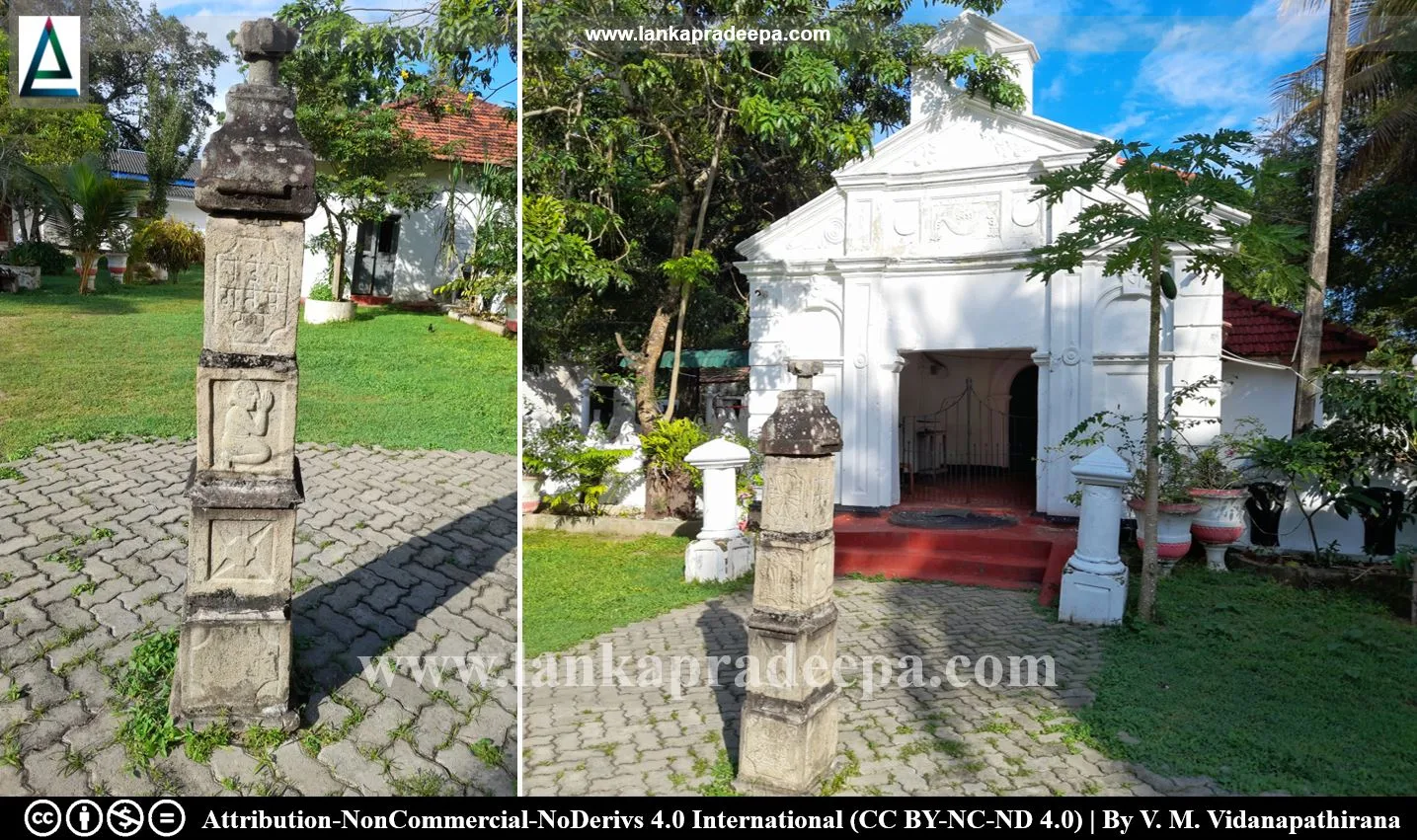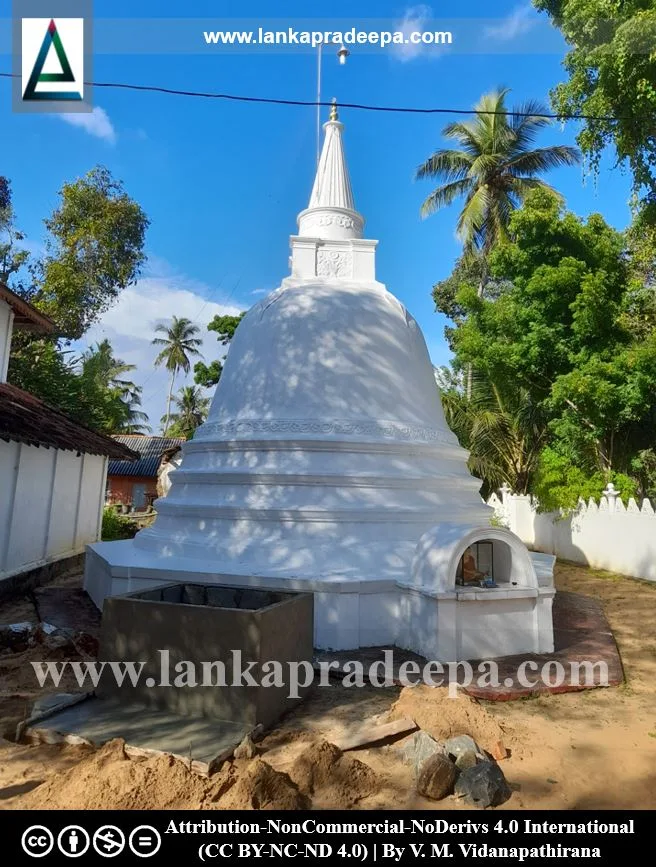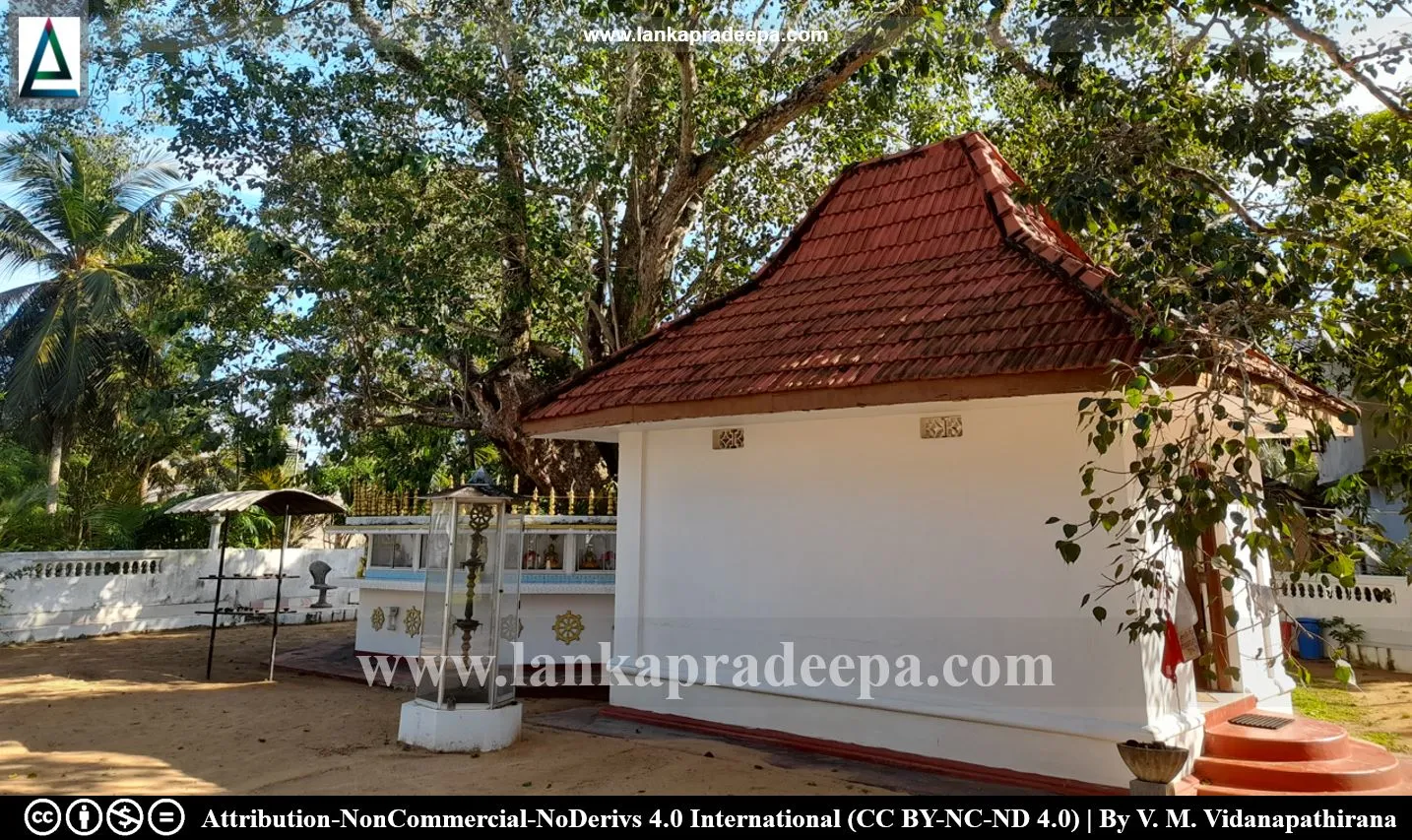
Weragampita Raja Maha Viharaya, also known as Weheragampita Viharaya (Sinhala: වේරගම්පිට රජ මහා විහාරය, වෙහෙරගම්පිට විහාරය), is a Buddhist temple situated in Weragampita village in Matara District, Sri Lanka.
History
This temple is believed to have been constructed during the Kandyan Period in the late 18th century (Abeyawardana, 2004). It is believed that this temple was established by a Buddhist monk named Kadurupokune Swarnajothi Thera around 1770, during the reign of King Kirti Sri Rajasinghe (1747-1782 A.D.) of Kandy (Ranaweera, 2015; Wikramaratne, 2015). However, some believe that there was a Buddhist temple since the days of King Kumaradasa [(513-522 A.D) Ranaweera, 2015; Wikramaratne, 2015].

This temple was the abode of the famous scholarly Buddhist monk Karatota Dhammarama Thera [(1735-1827) Abeyawardana, 2004; Vanarathana, 1994]. Honoured by King Sri Rajadhi Rajasinha (1781-1798 A.D) of Kandy for the writing of the unique poetic composition known as Barasakavya, Karatota Dhammarama Thera also served one time as the incumbent of the sacred Sri Pada Mountain (Abeyawardana, 2002; Abeyawardana, 2004; Vanarathana, 1994). The famous lady poet Gajaman Nona (1758-1814) and John D Oyly (1774-1824 A.D.), the British Collector of Revenue at Matara are said to have learned the Sinhala language under this monk (Ranaweera, 2015). Karatota Dhammarama Thera died on 14 July 1827 at Weragampita Viharaya and his tomb has been presently designated as a protected monument by the Department of Archaeology (Vanarathana, 1994).

The image house of the temple contains sculptures and murals belonging to two periods; to the Kandyan period and to the modern period (Ranaweera, 2015). It is said that King Kirti Sri Rajasinghe donated two gemstone for the decorations of the eyes of the main Buddha statue placed in the image house (Ranaweera, 2015). However, due to the renovations done in 2460 B.E. (1916 A.D.), the original features of some of the old murals have been altered. Also stone pillar containing various carvings with the date 15 May 2459 B.E. (1915 A.D.) is found in front of the image house.
A protected site
The grave monument of Karatota Thera and the ancient shrine in the premises of Weragampita Rajamaha Vihara situated in
the Grama Niladhari Division No. 417, Uyanwaththa North in the Divisional Secretary’s Division Matara are archaeological protected monuments, declared by a government Gazette notification published on 7 July 2016.



.
References
1) Abeyawardana, H.A.P., 2002. Heritage of Sabaragamuwa: Major natural, cultural and historic sites. Sabaragamuwa Development Bank and The Central Bank of Sri Lanka. ISBN: 955-575-077-7. p.32.
2) Abeyawardana, H.A.P., 2004. Heritage of Ruhuna: Major natural,
cultural and historic sites. Colombo: The Central Bank of Sri Lanka.
ISBN: 955-575-073-4. pp.74-75.
3) Ranaweera, D. D., 2015. Matara Urumaya (in Sinhala). ISBN: 978-955-30-6285-7. S. Godage & Bros. pp.33-37.
4) The Gazette of the Democratic Socialist Republic of Sri Lanka; Extraordinary. No: 1974/16. 7 July 2016. p.2A.
5) Vanarathana, K., 1994. Matara Puravidyathmaka Ithihasaya (In Sinhala). ISBN: 955-9325-00-0. pp.168,221-225.
6) Wikramaratne, I., 2015. Pauranika Sthana Saha Smaraka: Matara Distrikkaya (In Sinhala). Department of Archaeology (Sri Lanka). ISBN: 955-9159-54-2. p.22.
Location Map
This page was last updated on 10 December 2023

